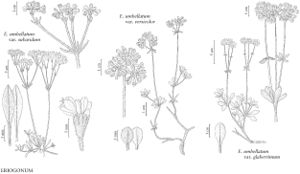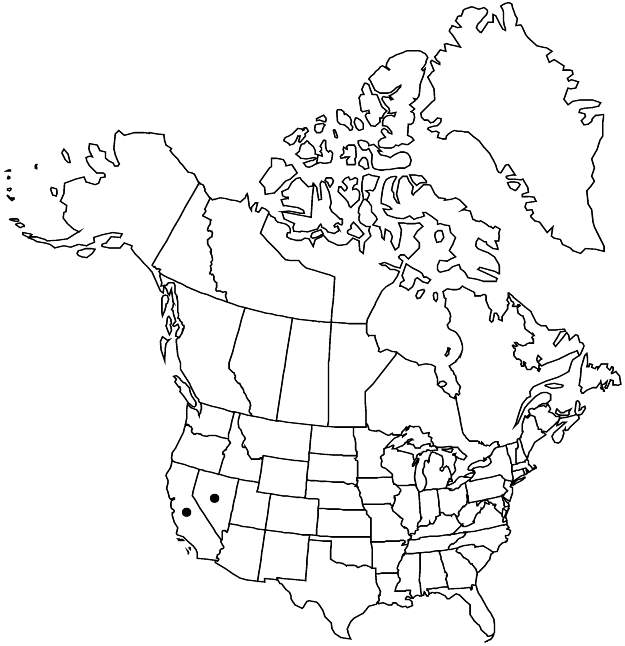Eriogonum umbellatum var. versicolor
Leafl. W. Bot. 3: 17. 1941.
Herbs, spreading to somewhat prostrate mats, 1–3 × 1–4 dm. Aerial flowering stems usually erect, 0.5–1.5 dm, floccose, without one or more leaflike bracts ca. midlength. Leaves mostly in loose rosettes; blade usually elliptic, 0.5–1.5 × 0.3–1 cm, thinly tomentose on both surfaces, sometimes nearly or quite glabrous and green or becoming reddish adaxially, margins plane. Inflorescences umbellate or compound-umbellate; branches 0.5–1 dm, without a whorl of bracts ca. midlength, floccose; involucral tubes 2–3 mm, lobes 1–2 mm. Flowers 3–6 mm; perianth yellow, becoming reddish brown to rose or pink, with large reddish spot on each midrib.
Phenology: Flowering Jun–Sep.
Habitat: Gravelly to rocky flats, slopes, and ridges, sagebrush communities, montane conifer woodlands
Elevation: 1900-3300 m
Discussion
Variety versicolor occurs infrequently in scattered mountain ranges across southern Nevada (Clark, Eureka, Lincoln, Lyon, Nye, and White Pine counties) and into California (eastern Inyo and Mono counties), where it may be somewhat more common. It occasionally is difficult to distinguish, as it approaches both var. dichrocephalum and var. juniporinum in nearly all features except flower color, a trait that is distinctive and consistent in the field. Throughout its range, plants with both simple and branched inflorescences may be observed, the branched expression being the more common one. Variety versicolor is found infrequently in cultivation and ought to be more commonly used.
Selected References
None.

